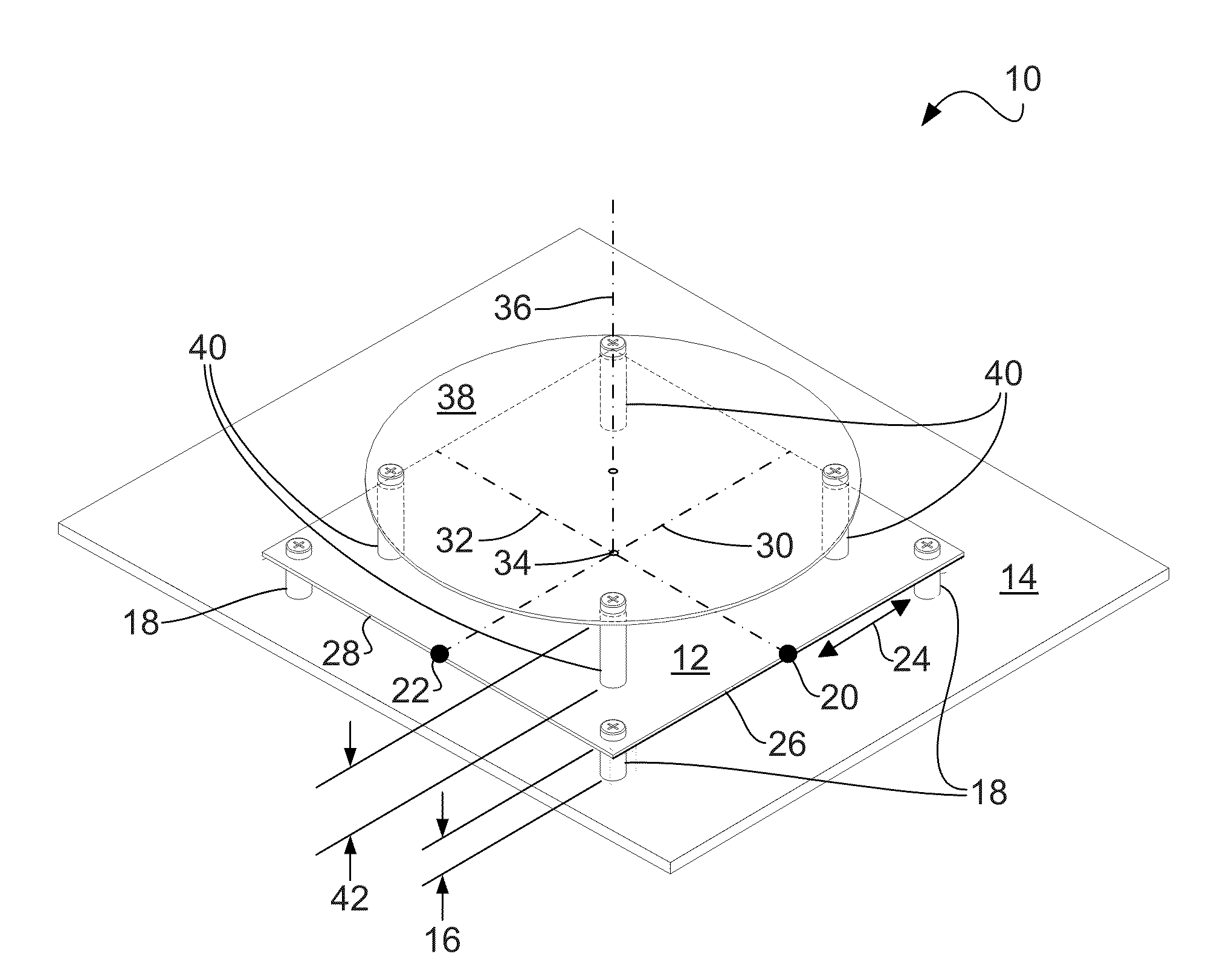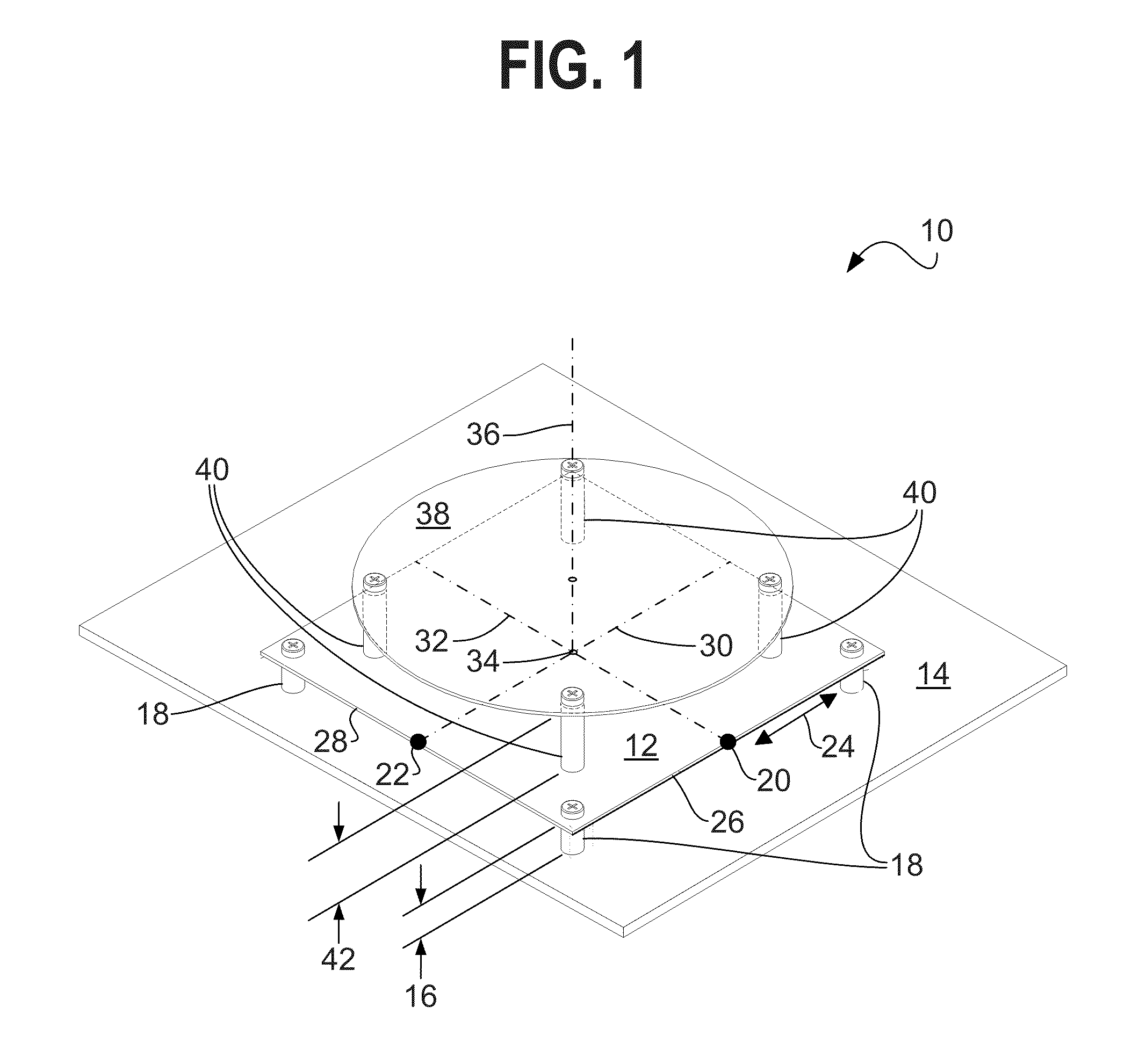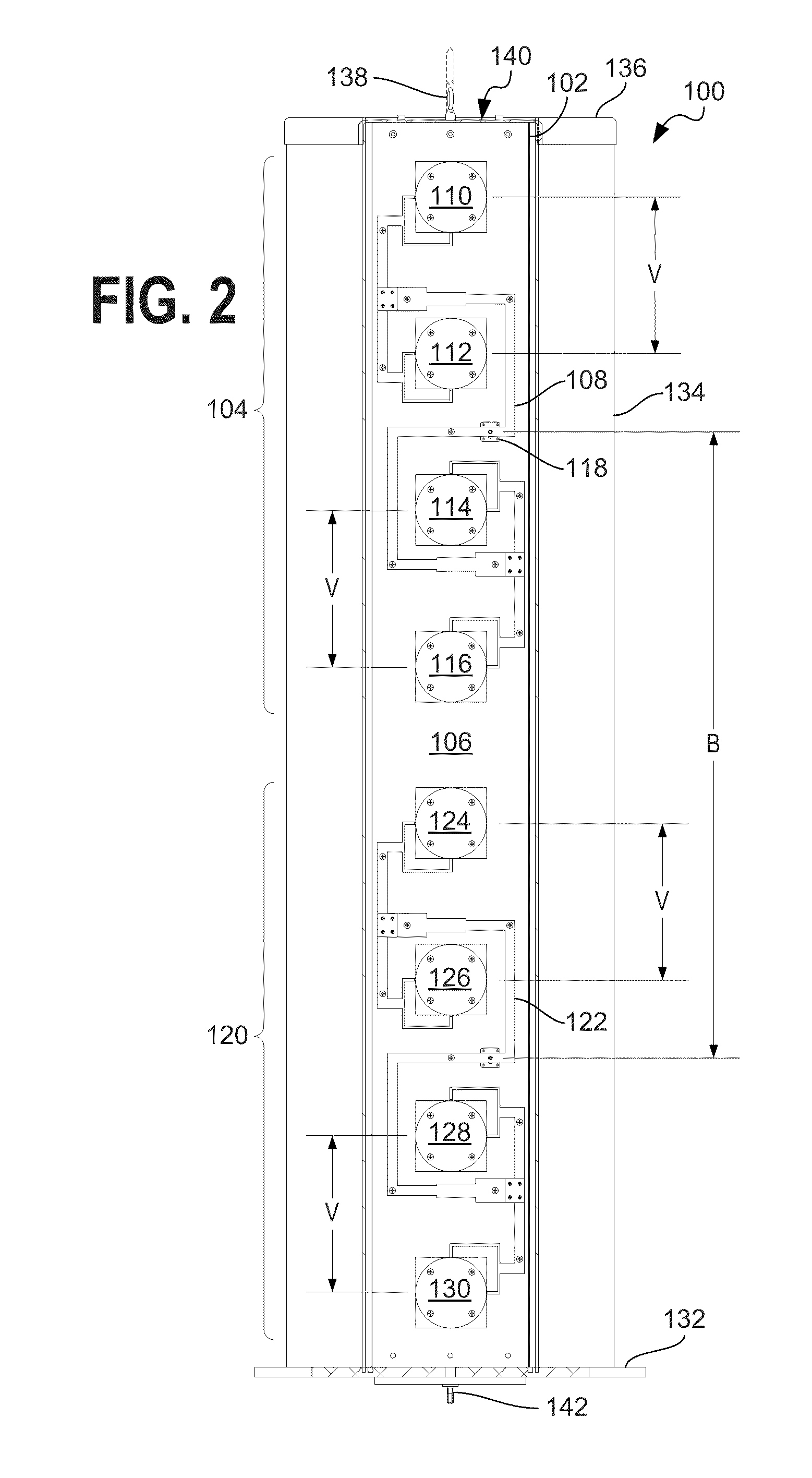Circularly-Polarized Antenna
a circularly polarized antenna and antenna technology, applied in the direction of polarised antenna unit combinations, electrically long antennas, antennas, etc., can solve the problems of poor voltage standing wave ratio (vswr), large cost, narrow bandwidth capability, etc., and achieve high broadcast transmitter power, broad bandwidth capability, and reduced cost
- Summary
- Abstract
- Description
- Claims
- Application Information
AI Technical Summary
Benefits of technology
Problems solved by technology
Method used
Image
Examples
Embodiment Construction
[0023]The invention will now be described with reference to the drawing figures, in which like reference numerals refer to like parts throughout.
[0024]FIG. 1 is a perspective view of a single radiator 10 according to an embodiment that incorporates the invention. The directly-excited patch component 12 is shown positioned above and parallel to a segment of a backplane 14, by a patch height 16, using insulating standoffs 18 made from a material such as polytetrafluoroethylene (PTFE), polyethylene, or the like. For clarity, placement of the standoffs 18 (incorporating either nonmetallic screws as shown in FIG. 1 or other retention devices such as the barb clips shown in FIG. 4) is displaced from placement of corresponding fittings in succeeding figures, rather than being aligned with the standoffs for the parasitic, discussed below.
[0025]The patch component 12 is excited at nodes 20, 22 on the periphery 24 of the patch 12, at the midpoints of two orthogonal edges 26, 28, on two axes 3...
PUM
 Login to View More
Login to View More Abstract
Description
Claims
Application Information
 Login to View More
Login to View More - R&D
- Intellectual Property
- Life Sciences
- Materials
- Tech Scout
- Unparalleled Data Quality
- Higher Quality Content
- 60% Fewer Hallucinations
Browse by: Latest US Patents, China's latest patents, Technical Efficacy Thesaurus, Application Domain, Technology Topic, Popular Technical Reports.
© 2025 PatSnap. All rights reserved.Legal|Privacy policy|Modern Slavery Act Transparency Statement|Sitemap|About US| Contact US: help@patsnap.com



